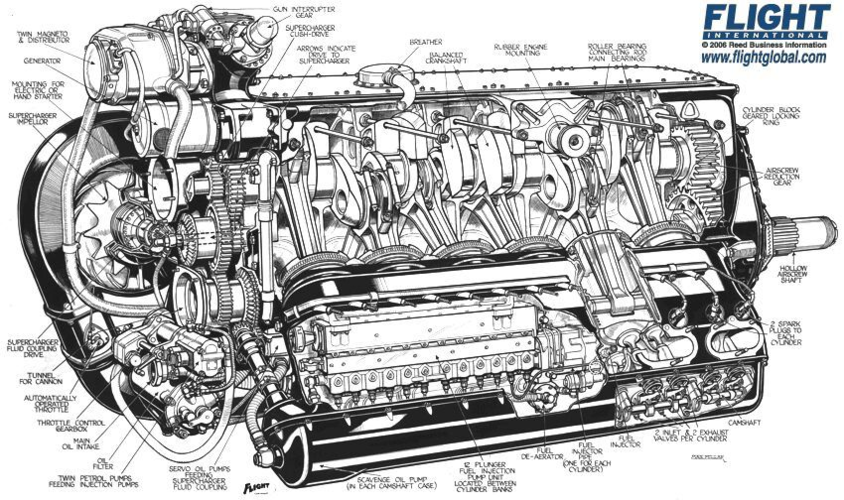xylstra
I really should change my personal text
- Joined
- 23 October 2018
- Messages
- 84
- Reaction score
- 38
A DISCUSSION ABOUT ALLIED vs. AXIS Super-Charger Drives: Recently I had several exchanges with an author of a recently published, well-researched book on WW2 aero-engine development. I was rather interested in his commentary on the merits of the use of the Föttinger hydraulic coupling employed by Daimler-Benz in the DB-600 series engines. It's rather obvious that an infinitely variable drive will offer smooth transitions in boost level to track changes in altitude in contrast to the seemingly archaic 'staircase' boost intervals produced by fixed-ratio, multi-speed gear drives. However, there is always a penalty to pay, namely poor transmission efficiency, leading to poor fuel economy on top of an already thirsty engine. He rather astounded me by stating that the hydraulic coupling saved 10% of engine power on take-off (altitude performance not stated). I remain somewhat sceptical. My understanding from what I've read of hydraulic couplings of the Föttinger type is that transmission efficiency barely rises above ~80% (see: https://journals.sagepub.com/doi/abs/10.1243/PIME_PROC_1948_158_015_02?journalCode=pmea) whereas a well designed meshed gear-train can and often does exceed ~90%. That's by no means the only issue, the early DB's were prone to over-heating of the hydraulic fluid although apparently solved in later marks. Usually this requires additional cooling capacity which in turn means more weight and incurring a parasitic drag penalty to boot. Moreover, the Föttinger super-charger drive still requires a step-up gear and it's efficiency losses are additional.
My understanding is that the R.A.E. extensively tested salvaged DB601's and I believe that ROLLS-ROYCE separately tested the DB601, not forgetting that, vice-versa the Germans also comparatively tested salvaged Allied aero-engines [Does anyone have copies of any of these reports?] I am given to understand that the British acknowledged the benefits of this form of super-charger drive yet ROLL's persevered with the change-speed gear drive. I assume that they did so due to the greater mechanical efficiency of this drive albeit prepared to suffer the additional mechanical complexity and the occasional 'crack-ups' (!).
But am I wrong, was the Föttinger in fact, actually more efficient? Intelligent analyses, please.
As if to further complicate the issue, it should not be over-looked that a variant of the American ALLISON V-12 also employed a hydraulically coupled super-charger drive but oddly, this was never extended to other variants in the range. Why was that? Did they encounter problems that were just too difficult or time-consuming to solve or were there other more prosaic reasons?
My understanding is that the R.A.E. extensively tested salvaged DB601's and I believe that ROLLS-ROYCE separately tested the DB601, not forgetting that, vice-versa the Germans also comparatively tested salvaged Allied aero-engines [Does anyone have copies of any of these reports?] I am given to understand that the British acknowledged the benefits of this form of super-charger drive yet ROLL's persevered with the change-speed gear drive. I assume that they did so due to the greater mechanical efficiency of this drive albeit prepared to suffer the additional mechanical complexity and the occasional 'crack-ups' (!).
But am I wrong, was the Föttinger in fact, actually more efficient? Intelligent analyses, please.
As if to further complicate the issue, it should not be over-looked that a variant of the American ALLISON V-12 also employed a hydraulically coupled super-charger drive but oddly, this was never extended to other variants in the range. Why was that? Did they encounter problems that were just too difficult or time-consuming to solve or were there other more prosaic reasons?
Last edited:



